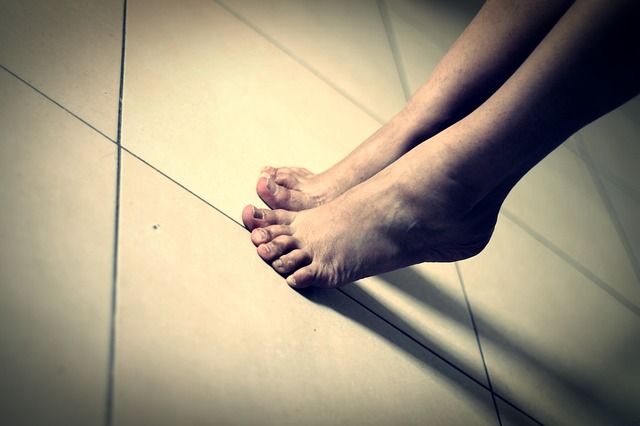Toes, despite being so durable, sometimes cause us embarrassment or pain – especially when they yellow and grow fungus that just doesn’t want to leave. In these cases, what is there left to do?
Yellow toenail fungus can cause the toenails to thicken and take on a discolored appearance (typically yellowed-brown tinge). This thickening can lead to increased pressure on the nail bed and growing discomfort while walking.
The toenail fungus, in causing nails to grow brittle and deformed at times, leads to more cracks appearing. This can allow more debris to be trapped inside and under the toenail, further discoloring it and allowing for more potentially dangerous fungi.

The debris and other things picked up in the cracks of the toenail can sometimes emit a foul odor of their own.
It’s recommended you consult a doctor if you notice any of these symptoms, but especially for those with weakened immune systems or diabetes.
Among some treatments, your doctor may recommend laser removal, and before you let that alarm you, don’t worry. We break down all the details of what to expect here.
What is Laser Toenail Fungus Removal?
Laser treatment for toenail fungus wasn’t approved by the FDA until 2010, and since then, it has grown rapidly as a common practice.
The appeal of this solution comes in the concept and possibilities the laser treatment provides. The lasers are able to heat and destroy selective toenail fungi, while leaving the remaining tissue of the surrounding area unaffected.
This not only rids you of the initial problem, but ensures your toe can recover smoothly, without a traumatic healing process. No excess dead skin and no wounds, like other treatments or surgeries may cause – just fixing the issue and healing the damage already done.
Additionally, since fungus has the risk of spreading to anything it touches, and hiding in tight places, the laser works by killing it everywhere with minimal contact, so it can’t spread.
During most procedures, patients don’t have to undergo any sedatives, and instead remain fully aware during the process. No need to clear your schedule; it can be a day-trip to the doctor’s office.

For the most part, patients are able to walk away from the procedure completely fine, only experiencing perhaps a bit of tenderness. There’s no recovery period necessary, though these things are based on the severity of the condition and the opinion of your healthcare provider.
There’s also an added benefit in short treatment periods, should more than one be necessary. Most individual treatment sessions may take around ten minutes to an hour for the actual laser procedure, so even if you have a tough case, it won’t be too disruptive to your schedule.
Does Laser Toenail Fungus Removal Work?
However, all that said, there’s been significant debate over the toenail fungus laser treatment process. The laser treatment for yellow toenail fungus involves shooting a laser tuned with specific frequency beams to target the onychomycosis generally responsible for toenail fungus.
Different studies have been done, and the process has gained more popularity since its approval by the FDA, but none of them have shown promising conclusive results on a large scale.
Though a few studies have shown favorable results, they did not account for a large enough representation, and these studies were funded by the laser companies themselves.
In short, conclusive studies have not been done to an extent where the treatment is accepted by the larger community, but smaller studies keep producing relatively favorable results.
The video below illustrates how it’s all done!
Laser Toenail Fungus Removal Cost
One of the biggest drawbacks you’ll find is the cost. Foot care is only now starting to be seen as more than a cosmetic need by many people, but most insurance companies still have not picked up the slack.
Laser treatment will likely be an out-of-pocket expense for you.
There are at-home options becoming more readily available, but they are still rather sparse. And for individuals who have more severe instances of yellow toenail fungus, the best option is to consult a professional and have it treated through them.
There are various types of lasers that professionals use, but most of them require multiple treatments and procedures. This is especially true for cases of toenail fungus that are more than mild. Prices will vary, but the lower-end of these treatments are around $1,000 per session.
At-home options, like the Ncare Nail Fungus remover, can start at out around $200. This is a more affordable alternative if you don’t have a severe case.

In the end, when it comes to methods for treating toenail fungus, we think laser removal looks promising.
Though it is still in the earlier stages, its results have been positive and some theorize that it will become the dominant form of care in the coming years, as the laser technology improves.
While it may be expensive, it’s certainly nothing to be afraid of.
Have you tried laser toenail fungus removal?

